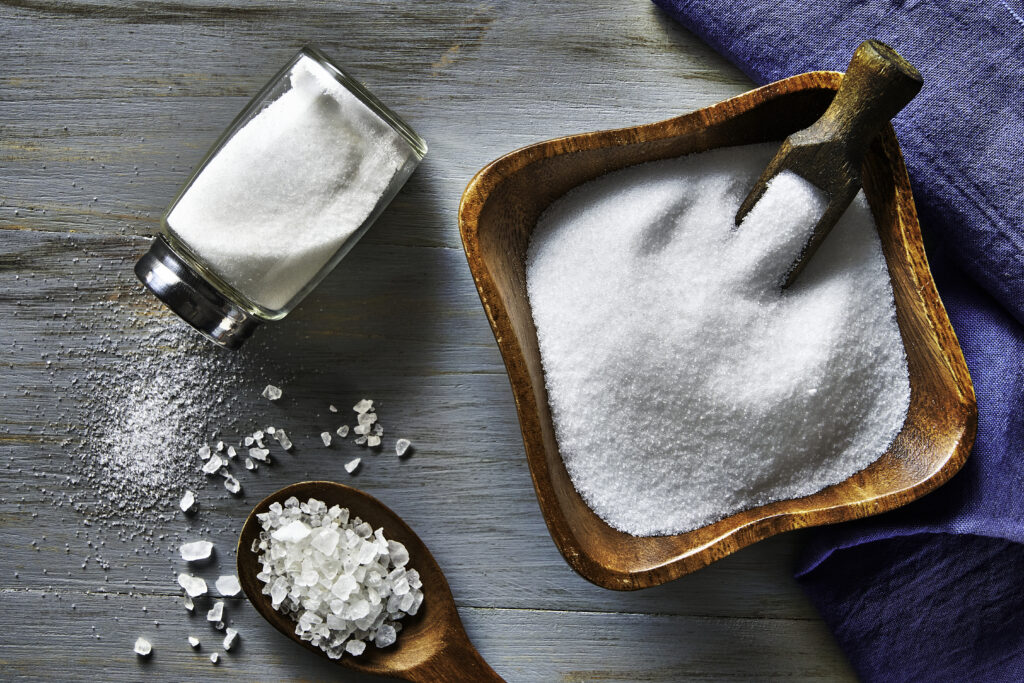How Low Can You Go?
Tips for reducing sugar and sodium content ahead of the food packaging regulation changes
The Food and Drug Administration (FDA) is expected to recommend new regulations in the second half of 2024 for mandatory reporting of key nutrition information on the front of packaging. These callouts would be in addition to the more complete labeling already in effect on the back or side of all food packaging.
According to NBC News, the proposal will most likely include information about sugar and sodium content as part of the new front-of-package reporting standards.
While the goal is to improve transparency for consumers using nutritional information to make purchasing decisions, the increased nutritional scrutiny related to this policy could motivate manufacturers to reformulate or develop lower sodium and reduced sugar options.
Companies exploring ways to reduce sugar and sodium will benefit from working with an experienced flavor partner to meet consumer expectations for nutrition and flavor.
Ideally, the time to start the conversation is now in order to fully understand options and be ready to act when the regulation changes take effect.
Front-of-Package Highlights
There are a variety of ways the new front-of-package reporting could look, including:
- Numbers (grams or ounces, for example) that objectively report exact amounts of specific nutrients per serving
- Colors similar to a traffic signal, offering subjective guidance along with nutritional content
- A format similar to Facts up Front, making the current optional standards set by the Consumer Brands Association the required rule
Regardless of the visual result, the information required will likely motivate consumers to make comparisons they never considered before.
Successfully Reducing Sugar and Sodium
Salt and sugar affect taste and texture, so flavor isn’t the only consideration when it comes to successfully reducing sugar and salt in your formulations. In fact, they often have a function in cooking and baking that influences the amount used. Therefore, reducing sugar and sodium can bring challenges beyond consumer preferences.
In addition, when replacing sugar with a high-intensity sweetener, it can sometimes create a peaky sweetness where consumers enjoy a very sweet taste that quickly dissipates. This sweetness curve can cause a perceived aftertaste or give the impression that something “feels off” due to the overall mouthfeel experience.
Sensient’s sweetness enhancer smooths out those spike-and-dip sensations and can help reduce sugar by up to 50% in some applications. A 20-30% reduction in most applications is common.
Likewise, Sensient’s TrueBoost™ SensaSalt™ flavor modulator can help reduce sodium by 25-40%, with taste testers reporting difficulty in telling the difference and sometimes even preferring the reduced sodium version.
Both products are part of our TrueBoost™ line, which are all-natural, label-friendly solutions that are predictably process stable and don’t require any special steps.
Easing the Burden of Reformulation
Our flavor experts often recommend starting from scratch if possible to create a base that meets your end goals. Rather than endless tinkering to adjust an existing formula, creating a base that meets all your criteria from the beginning strengthens the likelihood of creating a full-flavor item that doesn’t feel like it’s missing something.
Getting the base right enables you to provide the functionality, texture, mouthfeel and sensory appeal before adding your distinctive flavors.
In addition, we can mimic processing conditions and test formulations to verify that the flavor we send comes through in the end.
When you consider the significance of the entire process, it’s easy to see why the time to start thinking about how to handle the new rule changes is sooner than later. Be proactive about making changes for the best result, simplest solution, and fastest turnaround.
Contact us today to learn more about reducing sugar and lowering sodium in your favorite foods. We’ll help you figure out “how low you can go!”
